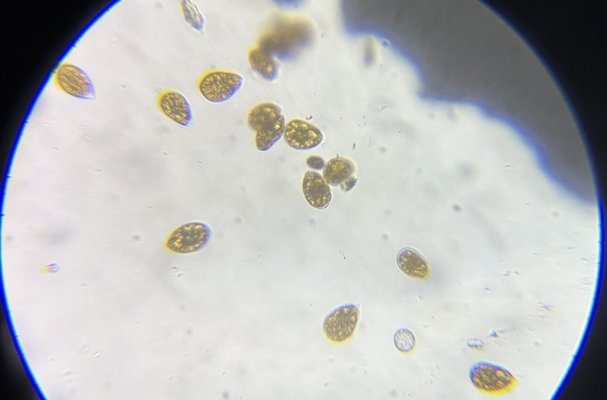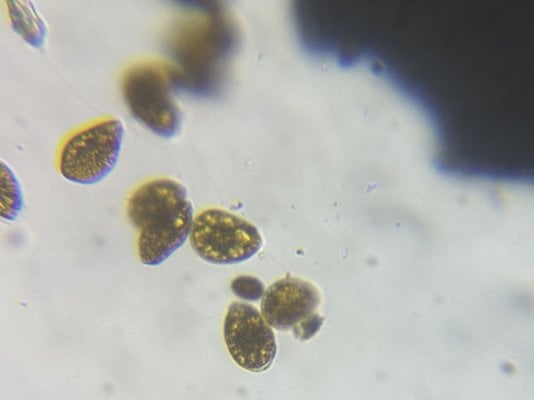My thought is this is Amphidinium. agree?
Some seem to have more pronounced beaks than others.
Looking at the display tank, there are some small areas of mats on sand in certain areas.
Some long strands of dinos that cling to corals and glass.
2 pictures here


2 videos here
Video 1 (I realize the big guy active in the middle is not a dino, btw)
Video 2
I think it is in check for now....possibly even subsiding a bit...so I am not going to go crazy about it now.
Most corals look find and continue to do well. Two gorgonians stopped extending their polyps around the time this started (for the last 3-4 weeks). Not sure if that is coincidental or they are irritated by the dinos. They are not covered in dinos but they do catch the strands in the flow. easy to blow them off with jet of water.
Is removing those parts of the sand bed worth it or is that tactic not really expected to do much?
Some seem to have more pronounced beaks than others.
Looking at the display tank, there are some small areas of mats on sand in certain areas.
Some long strands of dinos that cling to corals and glass.
2 pictures here


2 videos here
Video 1 (I realize the big guy active in the middle is not a dino, btw)
Video 2
I think it is in check for now....possibly even subsiding a bit...so I am not going to go crazy about it now.
Most corals look find and continue to do well. Two gorgonians stopped extending their polyps around the time this started (for the last 3-4 weeks). Not sure if that is coincidental or they are irritated by the dinos. They are not covered in dinos but they do catch the strands in the flow. easy to blow them off with jet of water.
Is removing those parts of the sand bed worth it or is that tactic not really expected to do much?

















